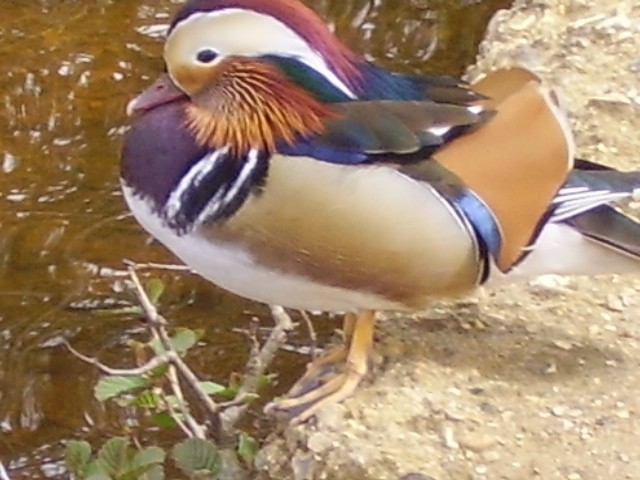Mandarin Duck
A species of Mandarin Duck and Wood Duck, Also known as Mandarin Ducks Scientific name : Aix galericulata Genus : Mandarin Duck and Wood Duck
Mandarin Duck, A species of Mandarin Duck and Wood Duck
Also known as:
Mandarin Ducks
Botanical name: Aix galericulata
Genus: Mandarin Duck and Wood Duck
Content
Description People often ask General Info
 Photo By silversea_starsong , used under CC-BY-NC-4.0 /Cropped and compressed from original
Photo By silversea_starsong , used under CC-BY-NC-4.0 /Cropped and compressed from original Description
It’s difficult to miss the mandarin Duck whether it is solo or gathering in flocks. The small duck has an exotic appearance, especially the males with their colorful sail fin feathers on their backs. The duck is most often seen around lakes with tree stands nearby. It is not uncommon to find the duck perching in the trees.
Size
41 - 49 cm
Life Expectancy
3-12 years
Nest Placement
Cavity
Feeding Habits
Mandarin Duck diet includes plants, seeds, snails, insects, and small fish, varying seasonally. They forage by dabbling or on land, selectively eating beech mast, acorns, and grains in fall/winter, while spring/summer brings more insects, snails, and amphibians.
Habitat
Mandarin Duck primarily dwells in forested edges along freshwater bodies such as rivers, lakes, and marshes, preferably within dense deciduous woodlands with emergent vegetation and wooded islets. Typically found below 1500 meters elevation, they adapt to altitudes up to 2700 meters. Winter sees an expanded habitat range to flooded fields and coastal areas, while introduced populations occupy open spaces adjacent to water and woodland.
Dite type
Omnivorous
People often ask
General Info
Feeding Habits
Bird food type
Distribution Area
The species was once widespread in East Asia, but large-scale exports and the destruction of its forest habitat have reduced populations in eastern Russia and in China to below 1,000 pairs in each country; Japan, however, is thought to still hold some 5,000 pairs. The Asian populations are migratory, overwintering in lowland eastern China and southern Japan. Specimens frequently escape from collections, and in the 20th century, a large, feral population was established in Great Britain. Isolated populations exist in the United States. 